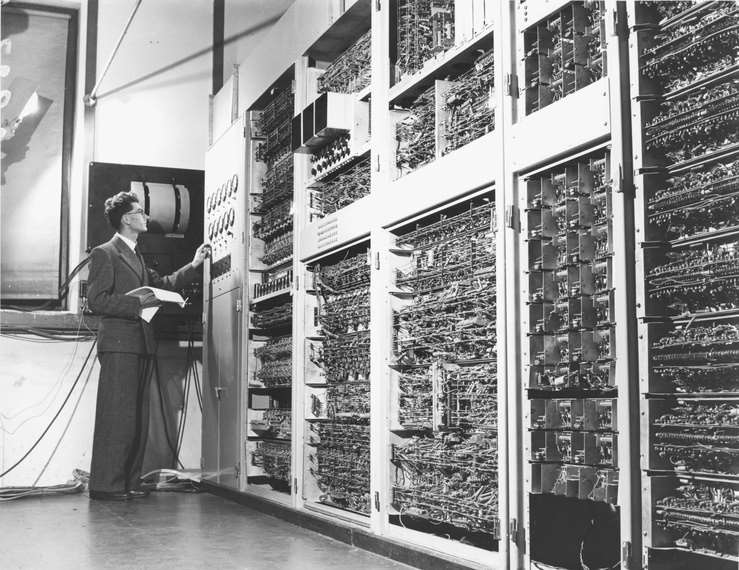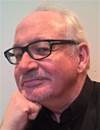Preamble: The Australian Computer Society was formed 50 years ago, when the various state computer societies joined forces.
To mark the occasion, the ACS has initiated a heritage project to honour the many individuals who have contributed to the growth of the ICT profession in Australia.
At the heart of the project is a history of computing in Australia. It is not just a history of the ACS, but the history of a profession.
Australia has the longest computing history of any country, excepting the US and the UK, and CSIRAC in the Museum of Victoria is the oldest computer still in existence.
Chapter 1 -The start of Australia’s computing history
Computing began in Australia in November 1949 at the University of Sydney, when Trevor Pearcey, aged 30, switched on a computer he had designed and largely built himself. That machine was the CSIR Mark I – later to be renamed CSIRAC. CSIR – the Council for Scientific and Industrial Research – was the forerunner to today’s CSIRO.
Pearcey was an Englishman who came to Australia after World War II to work in the CSIR Division of Radiophysics. The Mark I was only the fourth stored program computer ever built. It used 2000 vacuum tubes and delay line storage with 32 metal tubes filled with mercury, each of which was able to hold 16 words. It had a memory capacity of 1,024 20 bit words, or about 2.5 kilobytes of RAM in today’s terminology.
It used a 415 volt three-phase power supply and consumed 30 kW of electricity, and was the size of a garage. It also had a loudspeaker, designed to give early warning of programming errors but which enabled it to create the first ever computer music.
The CSIR Mark I was a little temperamental, with faulty circuitry often hit with a rubber mallet to overcome intermittent faults. Pearcey developed a rudimentary but versatile programming language. It did not have an operating system – each program, fed in to the machine on paper tape, had to include all hardware instructions.
These were fed into the machine on paper tape. Frustrated by the unreliability of the available punched card equipment, Pearcey and his team designed and built their own entirely original 12 hole paper tape reader and punch equipment. They used a second hand post office teletype machine as the output device.
The Mark I was the only computer in Australia for five years, when the University of Sydney ordered a new machine called SILLIAC and the University of NSW ordered UTECOM. They were both adaptations of other designs, making the Mark I truly unique in the annals of computing history. It was then shipped to Melbourne, where it was renamed CSIRAC, and used for another ten years.
Trevor Pearcey subsequently had a long career in academic and commercial computing in Australia. After a stint back in England he was the driving force behind CSIRO’s move into computing, which led to the establishment of the CSIRO Division of Computing Research, and CSIRONET, established in 1963 as Australia’s first computer network.
When the Australian Computer Society was formed in 1966, he was its first vice president.
In 1980 he became the first Dean of Computing and Information Systems at Caulfield Institute of Technology, later renamed the Chisholm Institute and now a campus of Monash University. He retired shortly afterwards to the Mornington Peninsula near Melbourne. He died on 27 January 1998, just a month short of his 90th birthday.
Trevor Pearcey’s name is honoured today in the Pearcey Awards, which recognise the pioneering achievements of Australians in the ICT industry. The awards are given by the Pearcey Foundation, a non-profit organisation set up shortly after his death. The Foundation operates broadly across the Australian ICT sector, and is involved in debate and public policy on critical national issues such as productivity, the digital economy and national infrastructure.
Pearcey was a true visionary. He wrote a 20-page article in the February 1948 edition of the Australian Journal of Science, about electronic computing. In closing he said:
"In the non-mathematical field there is wide scope for the use of the techniques [of computing] in such things as filing systems. It is not inconceivable that an automatic encyclopaedic service operated through the national teleprinter or telephone system, will one day exist.”
This was written when he was still developing the CSIR Mark I. Most of the article is devoted to a detailed technical description of the theory and practice of electronic computing, but his mention of ‘filing systems’ predicts the development of databases, and his ‘automatic encyclopaedic service operated through the national teleprinter or telephone system’ predicts the Internet, more than 20 years before it came into being, and 50 years before Google.
His comments are remarkable and his prescience astonishing. Trevor Pearcey was a giant of the early years of computing.
Veteran ICT journalist Graeme Philipson is researching and writing the Heritage Project book, which is due for release on the 50th anniversary of the formal incorporation of the ACS, on 3 October 2017.
The project also involves the creation of a ‘virtual museum’, cataloguing hardware and other artefacts, and collecting and curating documents on the history of the industry, including oral histories of as many people as possible.
Please get in touch with Graeme if you would like to contribute, at [email protected]










